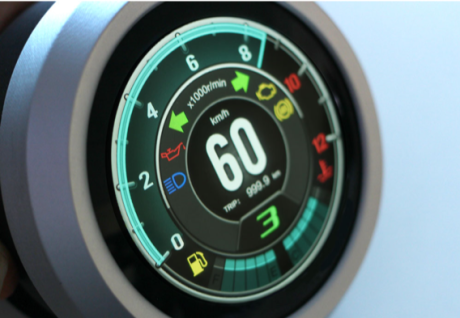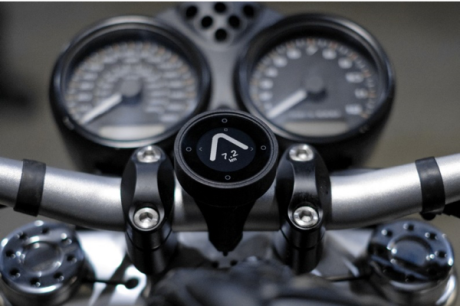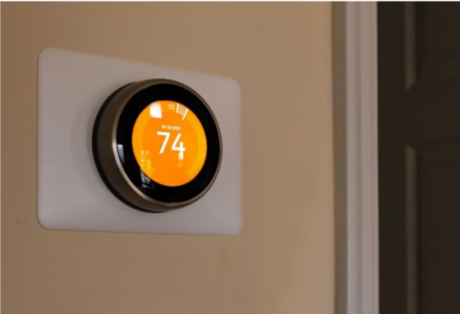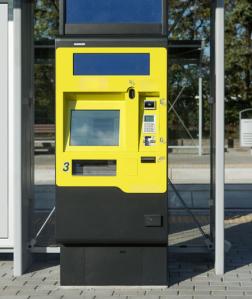We are seeing a definite trend in the market towards circular displays. Enquiries we receive and customers we talk to are curious to explore this as their product design option, so let me tell you a little more to whet your appetite.
So, let’s start off with the basics, what is a circular display?
Circular displays are quite simply a varying shape/form factor that we have added to our solutions portfolio to give our Anders customers choice and help differentiate their product design. In the past, to achieve the appearance of a circular display, by far the most cost-effective way to achieve this was using a rectangular display with a circular bezel placed over the top, to give the appearance of a perfect circular display. This solution worked, but as demand grew and grew for a true circular edge to edge display, the market catered for this need direct by manufacturing the circular display.

Our circular displays are manufactured using the exact same design and engineering techniques that we have coined for our more standard rectangular displays and offer the same level of high-end specification and product configuration. It’s quite simply, a shape shift.
Why would someone select circular?
We are kind of going around in circles in product design, but the shape has obviously always existed.
Let’s look at the automotive industry over the past 60 years. The Morris Mini Cooper with its iconic circular designed headlights and dials was first introduced in 1959 and reintroduced to the market in the early 2000s along with the re-invented Fiat 500. The driving factor behind this was our generations thirst for retro design. That nostalgic desire still exists today and at the heart of that, within these vehicles is the dashboard and those iconic circular gauges and dials. The Original Equipment Manufacturers (OEMs), the brand names, the logos, are all aware of this, so it was only a matter of time before we took the natural leap from mechanical circular dials into digital circular displays with touch and interactive technology.
So, where will we see circular displays?
At Anders we are seeing strong demand from the automotive industry for the reasons aforementioned. They are switching out their manual, or mechanical buttons and knobs to futureproof their brand as we move toward towards the dashboard of the future. This will be entirely interactive, sleek, and stylish.
In the same vein, motorbike manufacturers are demanding circular displays, to replace the classic instrument cluster on a motorbike which has generally been circular in design.

Designers are looking to replace these mechanical gauges with circular TFT displays that are not only impressive, but also robust. These displays don’t have the benefit of being kept safe, dry, and warm, enclosed within a car surround, therefore when we are asked to consult on this type of project, we need to take into account temperatures, from the extreme cold to the extreme heat, rainwater, and readability in direct sunlight
The smart home, the Internet of Things (IoT) and connected devices are a major driving force and have led to an explosion of customers coming to Anders as the display and embedded technology expert to learn how they can transition their product design from mechanical panels to displays. Some white goods manufacturers favour circular controls, and naturally the OEM doesn’t necessarily want to deviate away from their original product design too much, but they want to move with the trend towards the simplicity benefits that touchscreen technology and displays offer. Within the white good and general household appliance market, we are seeing a natural product evolution to circular displays.
Smart meters and heating controls follow the same pattern. Like white goods, there is now a need for these functional products to not only be fit for function, but to look good in your home environment. The smart OEM is the one who listens to their target market and designs their product to be aesthetically pleasing and aspirational.
And on the subject of aspirational, that’s where a product like Amazon Echo comes in. The have differentiated themselves in the market by implementing a circular display. They have perfectly positioned themselves as a must-have, ‘keeping up with the Jones’s’ type of product through very clever, very stylish product design, but at the heartbeat of that, is the circular display.

So, in conclusion - why circular?
There are a number of reasons, but the most common reasons that we at Anders are being asked to consult on circular displays is to help the OEM to:
- Differentiate their brand via design
- Position their brand as a premium brand, to ensure it becomes a lifestyle choice
- Maintain the brands identity, equity and integrity. If a circular display has always been part of their product design, to future proof consumer engagement they are switching out their mechanical gauges and replacing these with a circular display.
Don’t be square, when you can have a circle display. Get started with our Circular Display range!


